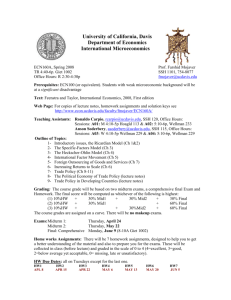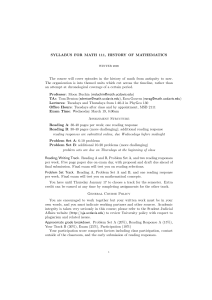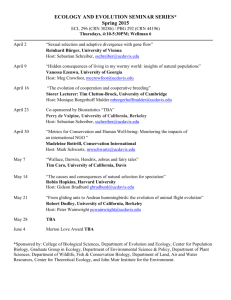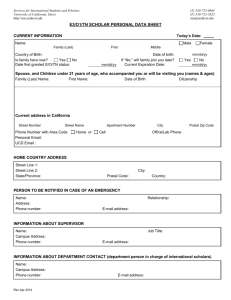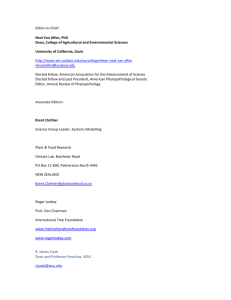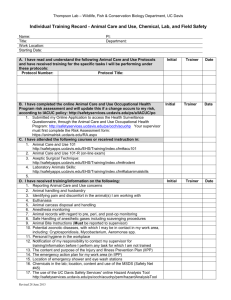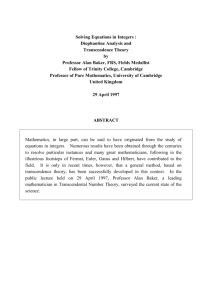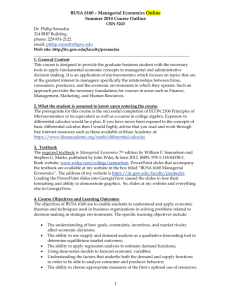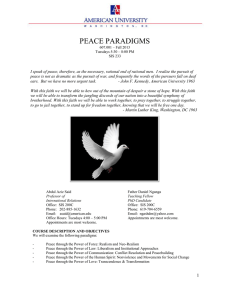Economics 111B
advertisement
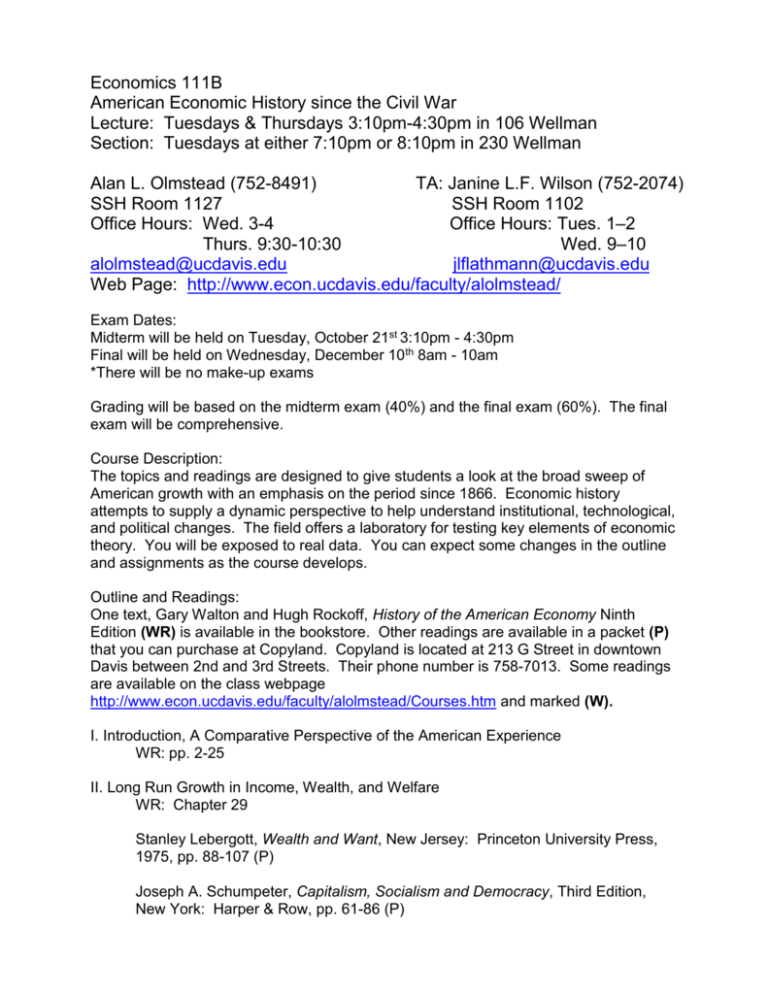
Economics 111B American Economic History since the Civil War Lecture: Tuesdays & Thursdays 3:10pm-4:30pm in 106 Wellman Section: Tuesdays at either 7:10pm or 8:10pm in 230 Wellman Alan L. Olmstead (752-8491) TA: Janine L.F. Wilson (752-2074) SSH Room 1127 SSH Room 1102 Office Hours: Wed. 3-4 Office Hours: Tues. 1–2 Thurs. 9:30-10:30 Wed. 9–10 alolmstead@ucdavis.edu jlflathmann@ucdavis.edu Web Page: http://www.econ.ucdavis.edu/faculty/alolmstead/ Exam Dates: Midterm will be held on Tuesday, October 21st 3:10pm - 4:30pm Final will be held on Wednesday, December 10th 8am - 10am *There will be no make-up exams Grading will be based on the midterm exam (40%) and the final exam (60%). The final exam will be comprehensive. Course Description: The topics and readings are designed to give students a look at the broad sweep of American growth with an emphasis on the period since 1866. Economic history attempts to supply a dynamic perspective to help understand institutional, technological, and political changes. The field offers a laboratory for testing key elements of economic theory. You will be exposed to real data. You can expect some changes in the outline and assignments as the course develops. Outline and Readings: One text, Gary Walton and Hugh Rockoff, History of the American Economy Ninth Edition (WR) is available in the bookstore. Other readings are available in a packet (P) that you can purchase at Copyland. Copyland is located at 213 G Street in downtown Davis between 2nd and 3rd Streets. Their phone number is 758-7013. Some readings are available on the class webpage http://www.econ.ucdavis.edu/faculty/alolmstead/Courses.htm and marked (W). I. Introduction, A Comparative Perspective of the American Experience WR: pp. 2-25 II. Long Run Growth in Income, Wealth, and Welfare WR: Chapter 29 Stanley Lebergott, Wealth and Want, New Jersey: Princeton University Press, 1975, pp. 88-107 (P) Joseph A. Schumpeter, Capitalism, Socialism and Democracy, Third Edition, New York: Harper & Row, pp. 61-86 (P) III. The American Population: Demographic Change, Immigration, Working Conditions, the Changing Role of Women. WR: Chapters 18, 30 & pp. 464-468 & pp. 477-486 Optional Reading: Susan B. Carter and Richard Sutch. “Historical Perspectives on the Economic Consequences of Immigration into the United States” in Charles Hirschman, Philip Kasinitz, and Joshua DeWind, eds., The Handbook of International Migration: The American Experience. New York: Russell Sage Foundation, 1999 (W) IV. The American Dilemma: Race and the South following the Civil War WR: Chapter 14 Jeremy Atack and Peter Passell, A New Economic View of American History (1994), Ch. 14 on The South after the Civil War, pp. 376-401. (P) Gavin Wright, Old South, New South (1986), Ch. 8 on the new economy of the postwar South, pp. 239-274, notes on 299-303. (P) V. Agricultural Development: Technological Change, Farmer Unrest, and Willie Nelson WR: Chapter 15 & pp. 526-533 & pp. 590-597. Alan Olmstead and Paul Rhode, “The Transformation of Northern Agriculture 1910-1990,” in Stanley Engerman and Robert Gallman (eds.), The Cambridge Economic History of the United States, Volume III, The Twentieth Century, New York: Cambridge University Press, pp. 693-742. (P) Alan Olmstead and Paul Rhode, “The Red Queen and the Hard Reds: Productivity Growth in American Wheat, 1800-1940,” The Journal of Economic History 62:4. (W) VI. Financial Reform in the late 19th and 20th Centuries WR: Chapters 19 & 28 VII. Structural Change During Two Wars: Roaring Twenties, the Great Depression, and the New Deal. WR: Chapters 21, 22, 23, 24, 25 VIII. The Growth of the Federal Government WR: Chapter 26 IX. Foreign Aid and Nation Building: The Case of the Marshall Plan J. Bradford DeLong and Barry Eichengreen, “The Marshall Plan: History’s Most Successful Structural Adjustment Program,” in Rudiger Dornbusch et al., Postwar Economic Reconstruction and Lessons for the East Today, Cambridge, MA: MIT Press, 1993, pp. 189-230. (W)
